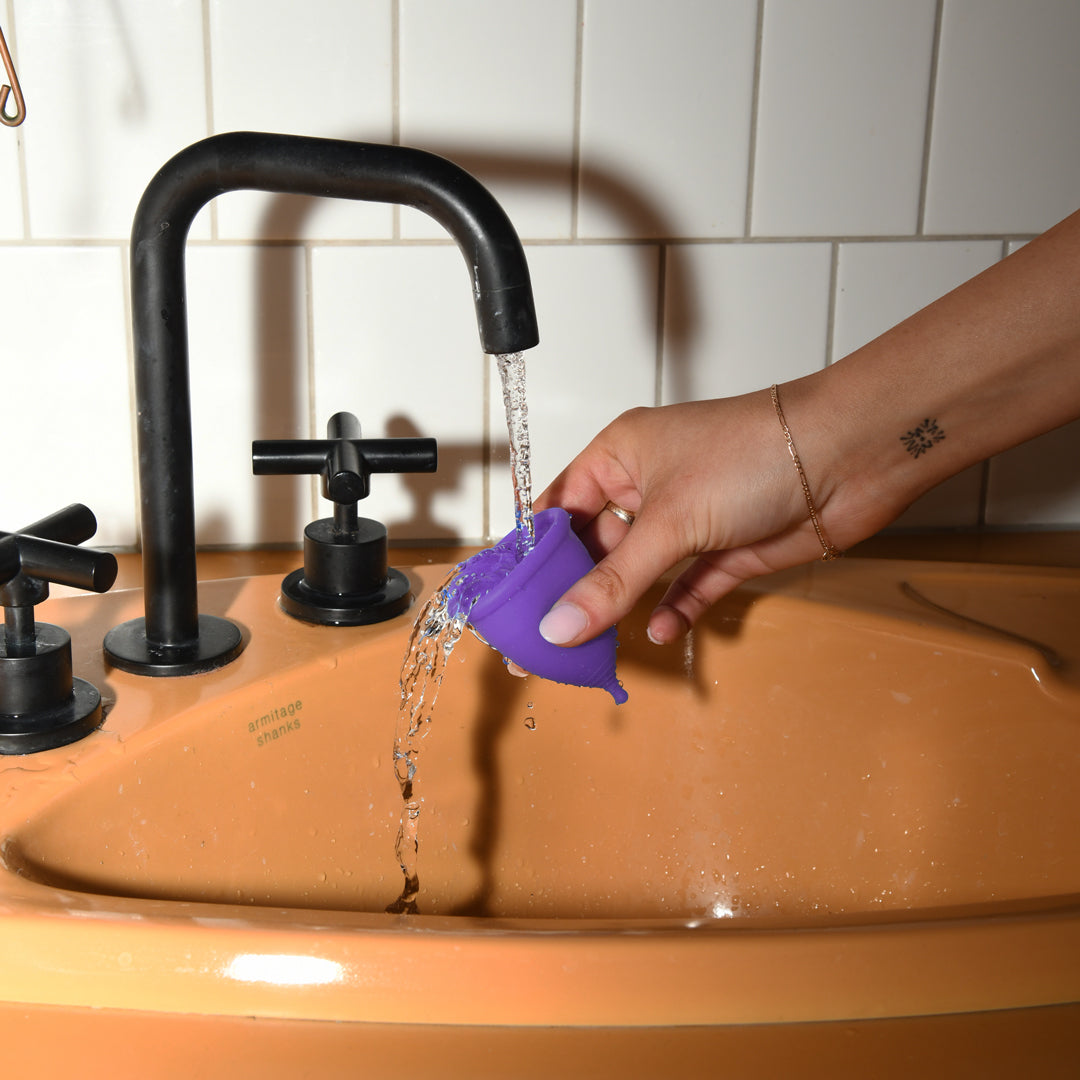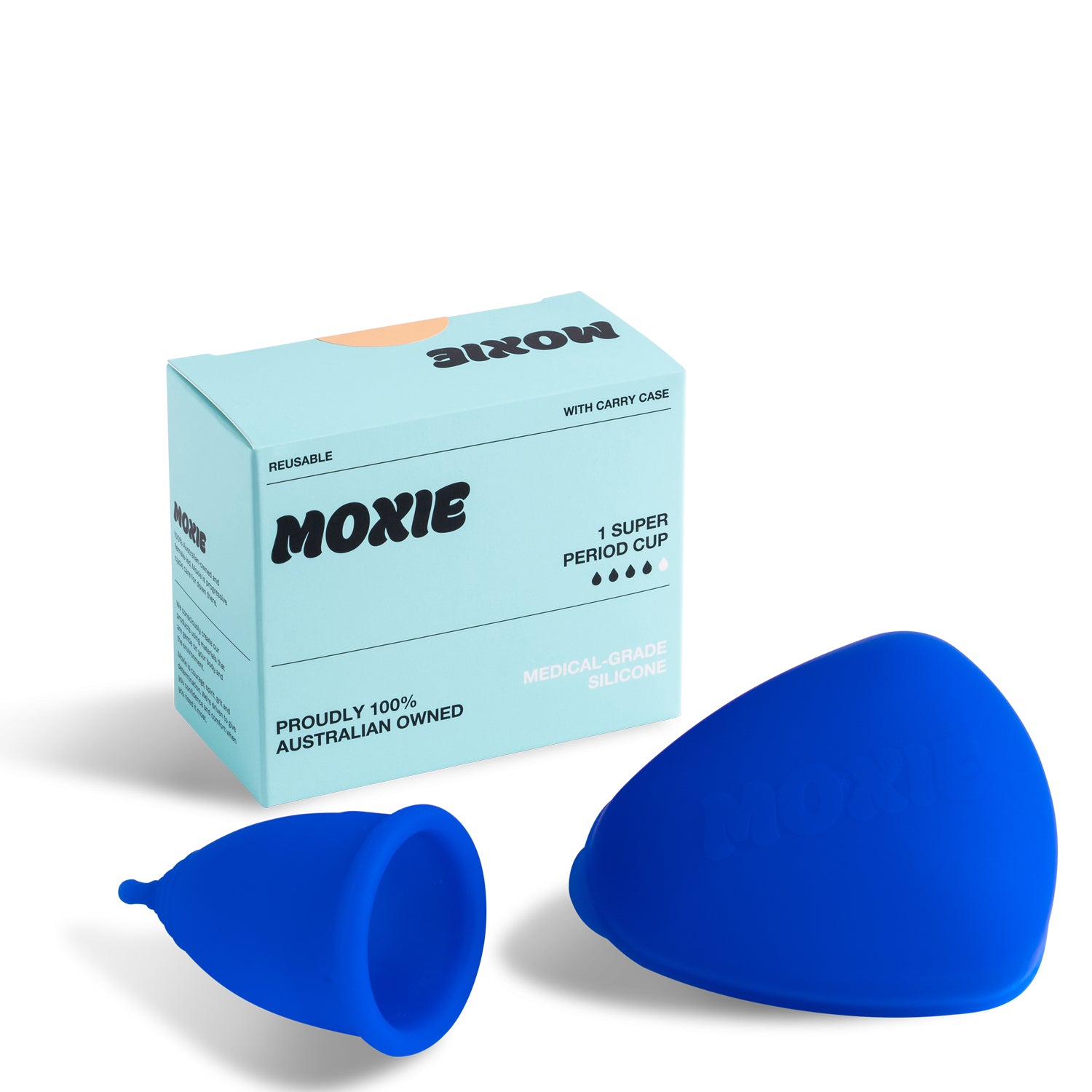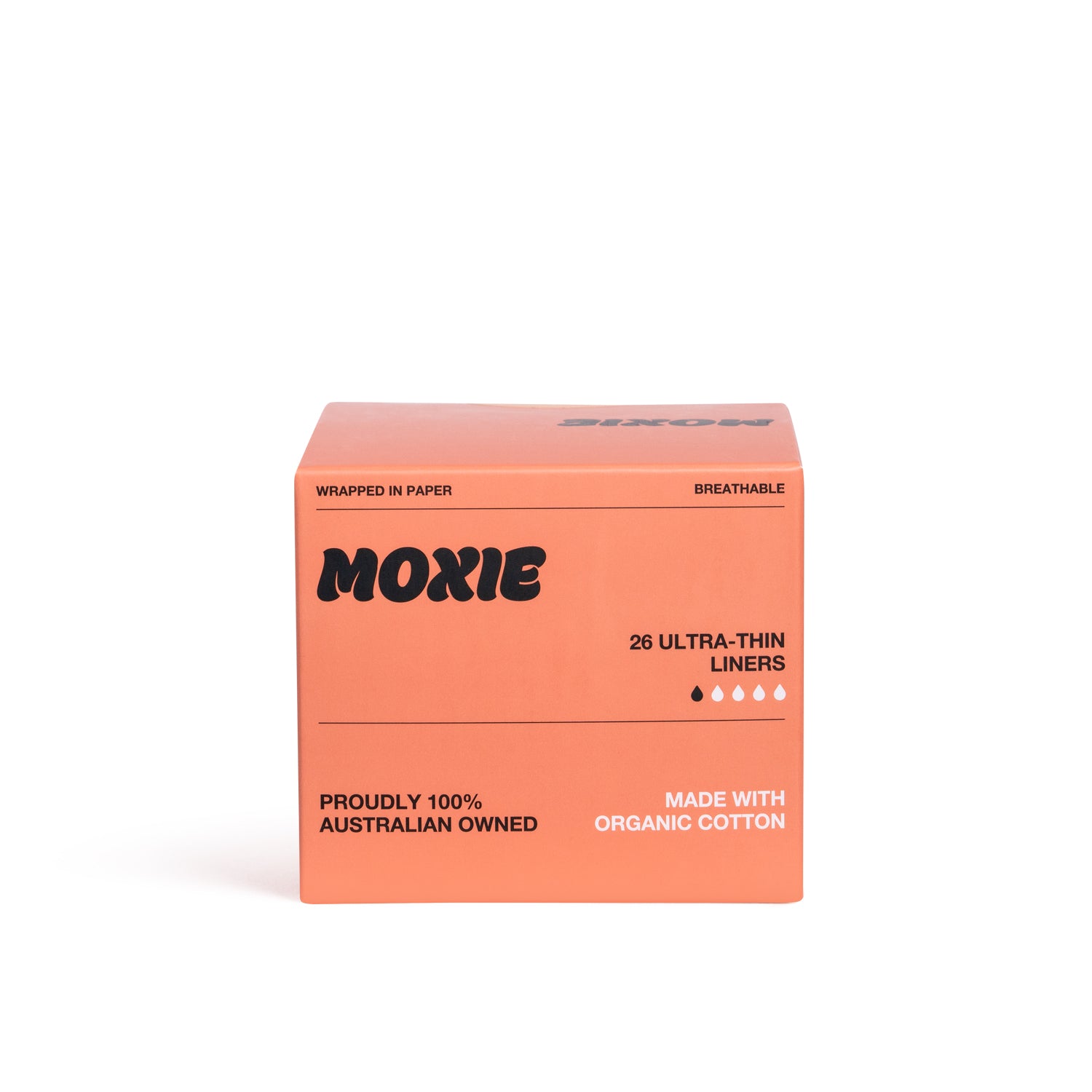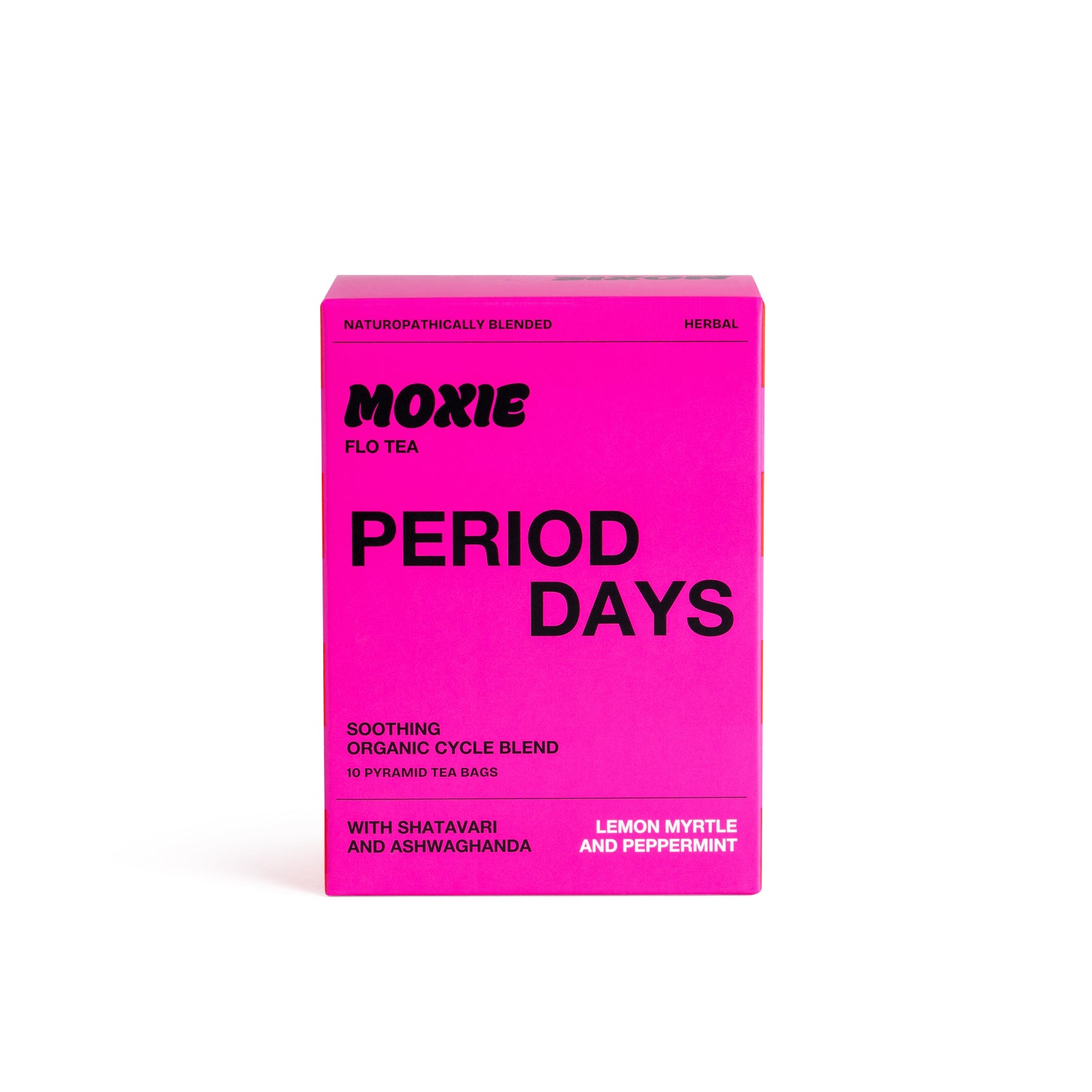REVIEWS
CYCLE CHAT WITH MISS MOXIE
HOW TO INSERT A PERIOD CUP
TIP: IT'S ALL IN THE FOLD
Curious about cups but worried about inserting one? It's easier than it seems once you know what to do. Miss Moxie shows us how to fold, insert and remove a period cup to help simplify your cycle.
PERIOD CUP STUCK?
HERE'S HOW TO GET IT OUT
Don't worry, it won't get very far. Wash your hands, breathe deeply, get into a comfortable position and let Miss Moxie guide you through some quick tips to help you safely remove your cup.
Still stuck? Get some more tips on the journal.
FAQs
-
A menstrual cup is a reusable, bell-shaped device usually made of medical-grade silicone (or similar material) that is folded and inserted into the vagina to collect period flow, rather than absorb it like pads or tampons.
-
Menstrual cups can generally be worn for up to 12 hours (in line with the current Australian and US standards), but the exact duration may vary based on your flow. It’s important to empty it regularly, especially during heavy days. Always read the label and follow the instructions for use, as these may vary by brand.
-
To remove a menstrual cup, reach inside your vagina with two fingers and pinch the base of your cup to break the suction seal, then gently wriggle it out while keeping it upright to avoid spills. Practice will make this easier, but you may opt to remove it in the shower or over a toilet the first few times just in case.
-
Yes, anyone with a period can use a menstrual cup. If you have your period and feel comfortable with insertion, you can use a menstrual cup as soon as you feel ready. Your body, your period, your choice.
-
Your menstrual cup may slip due to improper positioning, using the wrong size, or a lack of suction. Make sure your cup is inserted correctly and forms a seal against the vaginal walls (not against your cervix). If it's still slipping, consider trying a different cup size or brand for a better fit that's better suited to your body.
-
Go with the cup size that best suits your flow, though factors like age, childbirth history, and cervix height can also influence your choice. You might need to experiment a bit, as comfort and fit can vary from person to person. Most brands offer sizing guides on pack to help you find the right cup for your needs.
MOXIE CUPS
Moxie period cups come in two sizes: Regular, for a medium flow and for those who are under 30yrs, haven't given birth vaginally and have a relatively strong pelvic floor; and Super, for a heavier flow, are over 30yrs, have given birth vaginally, or have a weaker pelvic floor.
Note that this is a guide only. The reason that vaginal birth is a consideration is because this can weaken the pelvic floor muscles, and a smaller cup may be more difficult to keep in place.
Please also note that Moxie cups may not be suited to you if you have a particularly low sitting cervix.
See individual product listings for more details.
-
A menstrual cup is a reusable, bell-shaped device usually made of medical-grade silicone (or similar material) that is folded and inserted into the vagina to collect period flow, rather than absorb it like pads or tampons.
-
To remove a menstrual cup, reach inside your vagina with two fingers and pinch the base of your cup to break the suction seal, then gently wriggle it out while keeping it upright to avoid spills. Practice will make this easier, but you may opt to remove it in the shower or over a toilet the first few times just in case.
-
Your menstrual cup may slip due to improper positioning, using the wrong size, or a lack of suction. Make sure your cup is inserted correctly and forms a seal against the vaginal walls (not against your cervix). If it's still slipping, consider trying a different cup size or brand for a better fit that's better suited to your body.
-
Menstrual cups can generally be worn for up to 12 hours (in line with the current Australian and US standards), but the exact duration may vary based on your flow. It’s important to empty it regularly, especially during heavy days. Always read the label and follow the instructions for use, as these may vary by brand.
-
Yes, anyone with a period can use a menstrual cup. If you have your period and feel comfortable with insertion, you can use a menstrual cup as soon as you feel ready. Your body, your period, your choice.
-
Go with the cup size that best suits your flow, though factors like age, childbirth history, and cervix height can also influence your choice. You might need to experiment a bit, as comfort and fit can vary from person to person. Most brands offer sizing guides on pack to help you find the right cup for your needs.
MOXIE CUPS
Moxie period cups come in two sizes: Regular, for a medium flow and for those who are under 30yrs, haven't given birth vaginally and have a relatively strong pelvic floor; and Super, for a heavier flow, are over 30yrs, have given birth vaginally, or have a weaker pelvic floor.
Note that this is a guide only. The reason that vaginal birth is a consideration is because this can weaken the pelvic floor muscles, and a smaller cup may be more difficult to keep in place.
Please also note that Moxie cups may not be suited to you if you have a particularly low sitting cervix.
See individual product listings for more details.
MORE CYCLE SUPPORT ON THE JOURNAL
-
Read more: Menstrual cup stuck? Here's how to get it out.

Menstrual cup stuck? Here's how to get it out.
Having some trouble removing your menstrual Cup, Moxette? Stress less - we've got some fixes for that.Read more -
Read more: How to clean (and care for) your menstrual cup.

How to clean (and care for) your menstrual cup.
Here's how to ensure your trusty planet friendly(er), reusable period pal lasts you years and years.Read more -
Read more: Reasons why your menstrual cup is leaking (and how to fix it!).

Reasons why your menstrual cup is leaking (and how to fix it!).
Leaks are super common, particularly if you're new to using cups. Here's why your menstrual cup might be leaking - and what to do about it...Read more -
Read more: How to self-check your breasts/chest.

How to self-check your breasts/chest.
Learn how to get familiar with your ‘normal’, what to look out for, and when to get checked (note: always, if in doubt!). Do it now, save for later and tell your friends.
Read more

















